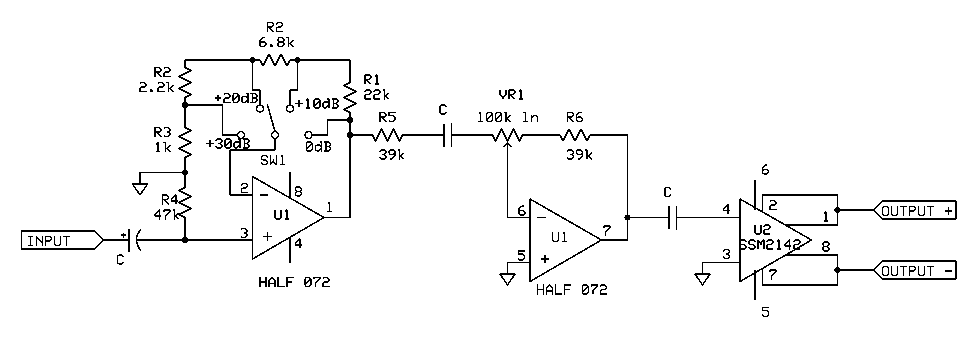stickjam
Well-known member
The Hammond hot-rod project continues...
I've abandoned the idea of replacing the solid state Leslie 770 amp with a 122-style design for a number of reasons, so I'm turning my attention to adding the grit within the organ itself.
At the best point to insert this "color" stage, it scopes out at a nominal 1.1Vpp unbalanced signal. The new circuit's output will be seeing a 20K impedance. I hope to model the same balanced topology of the Leslie 122 amp in a lower-power line version. I am envisioning the signal chain of this stage being:
Attenuation -> DRV134 to balance -> 2-stage balanced tube amp based on the 122 -> iron to unbalance -> Attenuation
One design objective I have is to implement the user interface not as separate drive and output controls but as a single "Brown" knob. (I'm actually considering being cute and using a decorative knob from a toaster that has different shades of "doneness" painted onto it. :green: ) I'd like this stage to be a psychoacoustically-if-not-electrically unity gain device. With all else equal, the apparent volume shouldn't change when you turn the knob--just the color should change.
My questions are:
1. Am I going to need to add some more gain on the drive side?
2. I originally planned to use a dual-gang rotary switch and hand-selected resistors as the "brown" knob. I'd ideally like to make it more of a smooth performance control rather than having discrete steps. Is there any way a dual ganged pot could be configured to provide the intended behavior? Will I need some exotic forward+reverse combo taper thing?
3. Any suggestions on what tube type (lower power pentode) and transformer model I should use to get a line-level output that imparts color most like the 122's 6550 power amp stage?
I'm getting close to completion on the power supply (hoping 300V 30mA B+ is sufficient). I'm looking for ideas as I prepare my shopping list for my next visit to the local "toob shop" for supplies to breadboard this piece.
Thanks!
Bob
I've abandoned the idea of replacing the solid state Leslie 770 amp with a 122-style design for a number of reasons, so I'm turning my attention to adding the grit within the organ itself.
At the best point to insert this "color" stage, it scopes out at a nominal 1.1Vpp unbalanced signal. The new circuit's output will be seeing a 20K impedance. I hope to model the same balanced topology of the Leslie 122 amp in a lower-power line version. I am envisioning the signal chain of this stage being:
Attenuation -> DRV134 to balance -> 2-stage balanced tube amp based on the 122 -> iron to unbalance -> Attenuation
One design objective I have is to implement the user interface not as separate drive and output controls but as a single "Brown" knob. (I'm actually considering being cute and using a decorative knob from a toaster that has different shades of "doneness" painted onto it. :green: ) I'd like this stage to be a psychoacoustically-if-not-electrically unity gain device. With all else equal, the apparent volume shouldn't change when you turn the knob--just the color should change.
My questions are:
1. Am I going to need to add some more gain on the drive side?
2. I originally planned to use a dual-gang rotary switch and hand-selected resistors as the "brown" knob. I'd ideally like to make it more of a smooth performance control rather than having discrete steps. Is there any way a dual ganged pot could be configured to provide the intended behavior? Will I need some exotic forward+reverse combo taper thing?
3. Any suggestions on what tube type (lower power pentode) and transformer model I should use to get a line-level output that imparts color most like the 122's 6550 power amp stage?
I'm getting close to completion on the power supply (hoping 300V 30mA B+ is sufficient). I'm looking for ideas as I prepare my shopping list for my next visit to the local "toob shop" for supplies to breadboard this piece.
Thanks!
Bob




